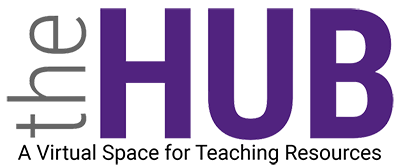 Data and DEI: Practical Insights to Achieving Desired Equity and Inclusion (DEI) Changes
Data and DEI: Practical Insights to Achieving Desired Equity and Inclusion (DEI) Changes
Of concern to HR and organizational leaders is evidence that shows DEI initiatives and goals failing despite senior-level desire and investments to achieve progress in diversity, equity, and inclusion. One area of relevance to MC is the challenge of meeting desired diversity targets in recruitment. The Ted Talk titled “Why corporate diversity programs fail — and how small tweaks can have a significant impact“ offers a new playbook for which organizational leaders can use to make progress in DEI goals.
DEI expert Joan C. Williams notes that many corporations that promote diversity and equity fall short in achieving DEI goals statistically, systemically, and culturally. Part of the problem, according to Williams, is that companies rely on traditional approaches to resolving biased behaviors in their organizations. Traditional DEI initiatives in the form of mandatory training do not address the systemic and cultural dynamics that lead to and perpetuate existing inequities and biased behaviors. Regardless of this knowledge, companies continue to pay billions every year in traditional forms of (mandatory) DEI training, and desired change expectations remain unrealized.
Williams’ Ted Talk focuses on how unconscious biases and subtle, unchallenged, assumptions in hiring, promoting, and supporting employees, lead to DEI goals and aspirations falling short. To address this, Williams asserts that by looking at data, and making tweaks in hiring and performance systems, industry leaders can make corrections and realize desired changes in DEI efforts.
Williams looks at five biased behaviors in hiring and evaluating performance.
- Prove it Again: White men with CV profiles go straight through gate-keeper stages of recruitment, while CVs that indicate age, gender, race, or disability, are second guessed.
- Tight Rope: White men that demonstrate emotional or assertive behavior at work are identified as ambitious. Other groups, especially women of color, walk a tight rope when engaging in that behavior.
- Tug of War: Bias leads to internal conflict and destructive competitiveness within a group.
- Maternal Wall: Mothers can be viewed as not committed or competent. This group often must prove themselves again when returning from an absence in the labor market. Further, mothers also face criticism for not performing their motherly duties.
- Racial stereotypes: Emotional outbursts are looked at differently and negatively against people of color compared to white people.
Williams proposes several ‘bias interrupters’ to address factors that lead to systemic inequities. In recruitment, data metrics can pinpoint problems or bias by looking at the original pool of people selected to interview and then examining the candidates for the final selection. For example, if only two of the 10 candidates are white and male, how many make the final cut? Where metrics show the minority of white males from the original pool consistently making the final cut, companies can tweak the process.
Performance evaluations are another area for bias interrupters. Williams’ research shows that people of color receive much less recognition for leadership in their performance reviews than white males. This number is even lower for women of color. When this statistic was shown to organizational leaders, they made a bias correction, and managers applied equitable leadership evaluations across all groups in future performance reviews.
Bias interrupters with an impact on hiring and promotion behaviors can have one of the biggest influences on shaping the systems and culture of an organization. By looking at hiring and promotion evidence, establishing baselines, and keeping up efforts to improve behaviors, organizations can use this playbook to realize desired DEI goals.
For additional information visit the Equity and Inclusion page.
